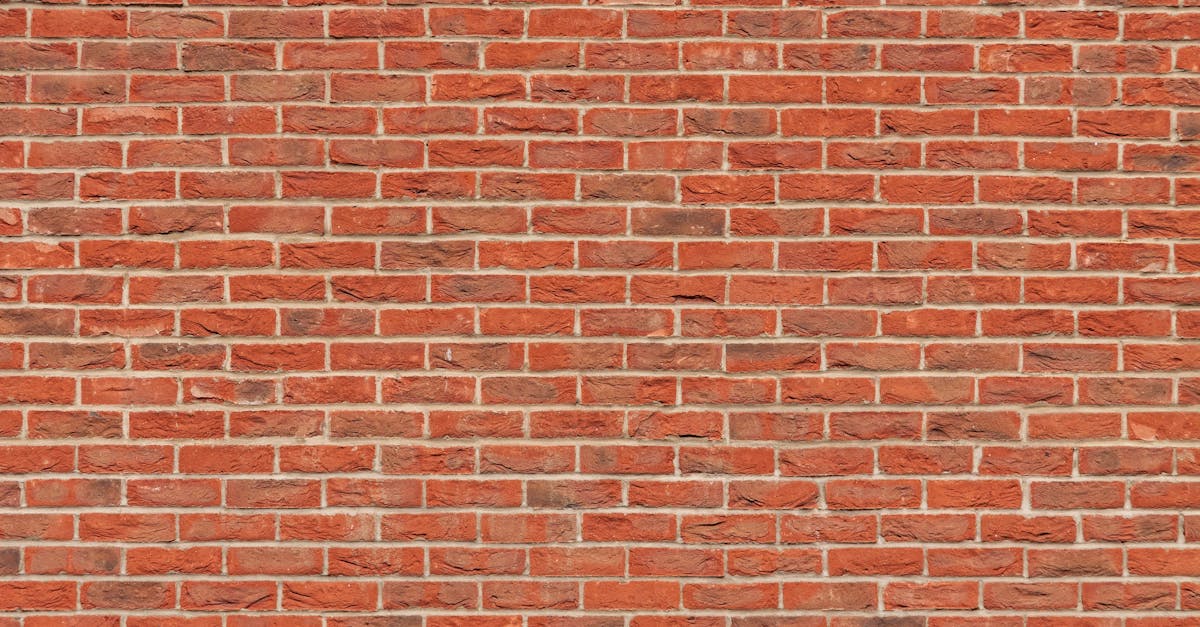
Benefits of Bamboo Cladding for Sustainable Building
Table Of Contents
Lightweight Characteristics
Bamboo is significantly lighter than many traditional building materials, making it an excellent choice for construction projects where weight considerations are crucial. This lightweight nature translates into easier handling and transportation, reducing the overall environmental impact associated with moving heavy materials. Builders appreciate this characteristic as it can lead to cost savings in logistics and facilitate quicker assembly on site.
The lightweight characteristics of bamboo also contribute to a decreased load on the foundation of structures. This aspect can be particularly advantageous when constructing in areas with challenging soil conditions. Using bamboo can minimise the need for extensive foundation work, thus further reducing both resource usage and construction time.
Ease of Installation and Transport
Bamboo cladding is highly regarded for its lightweight nature, which significantly simplifies both installation and transport. This advantage allows builders and contractors to handle the materials with ease, reducing physical strain and facilitating quicker project timelines. The lightweight panels can be effortlessly manoeuvred through tight spaces, making them ideal for urban settings where access may be limited.
Transporting bamboo cladding is also less cumbersome compared to heavier materials. Reduced freight costs are an added benefit, as lighter loads require less fuel consumption during transport. This efficiency not only helps mitigate environmental impacts but also streamlines logistics, ensuring that the materials can arrive on site promptly and ready for installation.
Natural Insulation Properties
Bamboo possesses unique natural insulation properties due to its hollow structure, which contains air pockets. These air-filled tubes promote effective thermal regulation, creating a barrier against extreme temperature fluctuations. This characteristic not only helps to maintain comfortable indoor conditions but also reduces the reliance on artificial heating and cooling systems. Consequently, buildings clad in bamboo can effectively minimise energy consumption, leading to lower energy bills and a reduced carbon footprint.
The thermal mass of bamboo also contributes to its insulation capabilities. During warmer months, it absorbs heat during the day and releases it at night, helping to stabilise indoor temperatures. This process can significantly enhance the overall energy efficiency of a building, making it an appealing choice for sustainable construction. Utilising bamboo as a cladding material can play a crucial role in achieving eco-friendly building standards, as it supports both energy conservation and occupant comfort.
Energy Efficiency Benefits for Buildings
Bamboo cladding demonstrates impressive energy efficiency attributes that contribute to the overall performance of buildings. Its natural thermal properties help maintain stable indoor temperatures, reducing reliance on artificial heating and cooling systems. This characteristic is particularly beneficial in climates experiencing extreme temperature variations, as it keeps spaces comfortable throughout different seasons.
Furthermore, the lightweight nature of bamboo facilitates easier installation, which can lead to reduced energy expenditure during the construction process. This aspect not only contributes to the sustainability of the building but also lessens the carbon footprint associated with heavy materials often used in traditional cladding. By choosing bamboo, builders can create structures that are not only environmentally friendly but also economically advantageous in the long term.
Enhancing Indoor Air Quality
Incorporating bamboo cladding into building designs can significantly elevate indoor air quality. Bamboo’s natural properties allow it to absorb volatile organic compounds (VOCs) commonly found in construction materials and household products. This absorption capability helps to purify the air, creating a healthier indoor environment. Furthermore, bamboo's low emission of toxins promotes a safer living space, making it an ideal choice for environmentally conscious builders and homeowners.
Additionally, bamboo contributes to humidity regulation, which directly influences air quality. Its unique cellular structure helps to regulate moisture levels, reducing excess humidity in damp environments. This characteristic prevents the growth of mould and mildew, which can adversely affect respiratory health. As a result, spaces clad with bamboo not only feel fresher but also foster a more comfortable and healthier atmosphere for occupants.
Bamboo’s Role in Natural Humidity Regulation
The unique cellular structure of bamboo allows it to absorb and release moisture, contributing to a balanced indoor climate. This natural moisture regulation helps to prevent issues related to excessive humidity, such as mould and mildew growth, which can compromise both health and comfort in living spaces.
By maintaining optimal humidity levels, bamboo cladding creates an environment that promotes overall wellbeing. This feature not only enhances the aesthetic appeal of interiors but also supports the longevity of building materials and furnishings, ensuring a healthier living space.
FAQS
What are the main benefits of using bamboo cladding in sustainable building?
Bamboo cladding offers lightweight characteristics, natural insulation properties, energy efficiency benefits, and enhances indoor air quality, making it an excellent choice for sustainable building practices.
How does bamboo's lightweight characteristic affect construction?
Its lightweight nature simplifies the installation process and reduces transportation costs, allowing for easier handling and quicker construction times.
In what ways does bamboo provide natural insulation?
Bamboo has inherent insulation properties that help maintain comfortable indoor temperatures by reducing heat transfer, thereby contributing to energy efficiency in buildings.
Can bamboo cladding help improve indoor air quality?
Yes, bamboo can enhance indoor air quality by regulating humidity levels and reducing the likelihood of mould and mildew growth, creating a healthier indoor environment.
Why is humidity regulation important in buildings?
Effective humidity regulation helps prevent condensation and mould growth, which can lead to health issues and structural damage, ensuring a safe and comfortable living or working space.
Related Links
Comparing Bamboo Cladding to Traditional MaterialsInnovative Uses of Bamboo Cladding in Architecture
The Durability of Bamboo Cladding in Australian Climates
Bamboo Cladding: A Guide to Different Styles and Finishes
Cost Analysis of Bamboo Cladding vs Other Natural Materials
Aesthetic Appeal of Bamboo Cladding in Modern Design
The Environmental Impact of Bamboo Cladding
Maintenance Tips for Bamboo Cladding
Installation Techniques for Bamboo Cladding